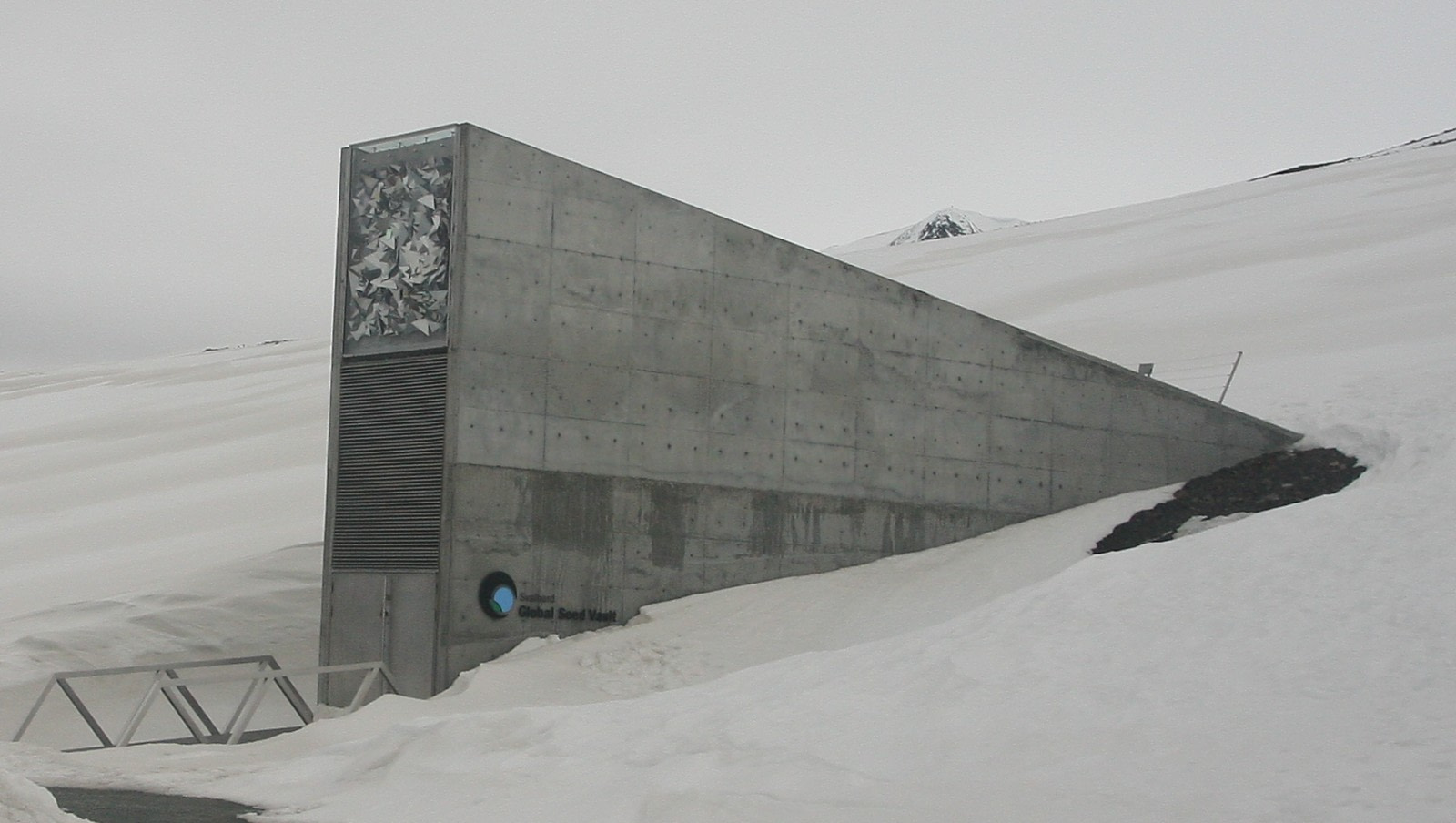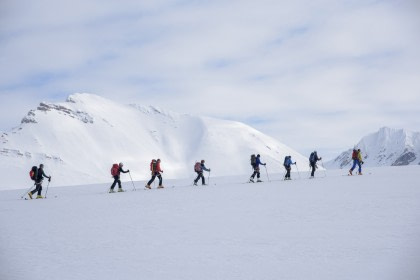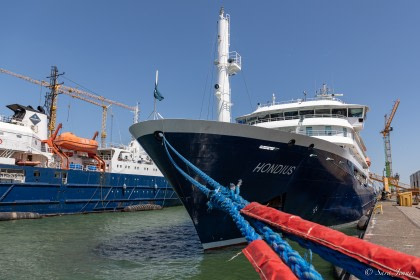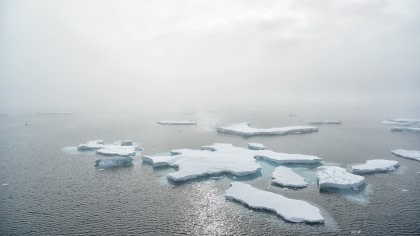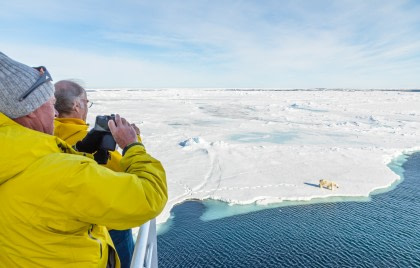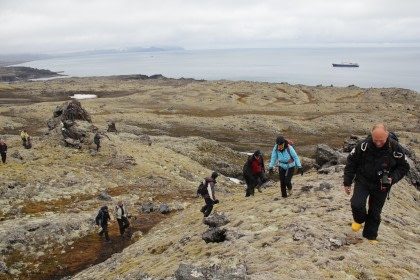Hope for the future, plan for the fallout
Literature, cinema, even video games give us no small supply of global disaster scenarios. These often come in the form of annihilating wars, pulverizing natural catastrophes, or sweeping pandemics that leave bands of ragged survivors scrambling for boxed potatoes and bullets amid hordes of cannibalistic zombies.
What we hear less about, however, are the real-life precautions governments and research groups take in case any of these scenarios bear fruit – or rather, threaten to wipe it all out.

By Miksu (Own work) [CC BY-SA 3.0], via Wikimedia Commons
Enter the Svalbard Global Seed Vault
One of these precautions is the Svalbard Global Seed Vault, known to some as the Doomsday Vault. Among its staff, however, it’s called simply the “Vault”. If that name isn’t the stuff of science fiction, consider the place: The entrance, a tilted monolith of concrete and steel, jabs out of the side of an ice-clutched Arctic mountain like some kind of wintry cubist bunker.
Step through its grim gray doors and you find yourself in a cylindrical steel tunnel drilled 100 meters into the solid rock, straight through the permafrost. Standing guard is a blinking red security system you could easily imagine scanning your fingerprints, eyes, and thoughts.
Down this tunnel, scientists buried in thick coats and hardhats wheel trollies packed with mysterious black boxes bound for the belly of the Vault. The whole scene looks like the title sequence of the next Philip K. Dick adaptation.
The last seed standing
The Svalbard Global Seed Vault is located on the island of Spitsbergen, the largest in the Svalbard archipelago, which surprisingly was not chosen for its stark aspect: Indeed, Spitsbergen cruises are one of the most popular Arctic trips for viewing polar bears and glacial fjords.
Rather, it is the island’s geological stability, low humidity, geopolitical isolation, and (traditionally) cold climate that contribute to the Vault’s purpose, which is to provide the final reserve of vital crops in the event any of the planet’s 1,700 gene banks are compromised.
These banks, protected biorepositories of organic material, house everything from plant tissues to animal embryos. In some cases, though, the facilities are located in regions subject to underfunding and mismanagement, upheavals and war – such as the gene bank in Aleppo, which years of conflict in Syria has rendered all but inaccessible.
Hence, the Svalbard Global Seed Vault. Despite the harsh Arctic climate (and in part because of it), the instability that could upend the gene banks is unlikely to upend the Vault. Its engineers even accounted for rising sea levels, building the facility high enough that maximum water swell would not affect the seeds.
But, as we shall see, even the smartest people can’t see everything coming.

NordGen/Johan Bäckman [Public domain], via Wikimedia Commons
Svalbard Seed Vault volume and variety
In terms of containment, the Svalbard Global Seed Vault is impressive. It has the capacity to safeguard up to 4.5 million crop types. With each crop type containing an average of 500 seeds, this means a total of 2.5 billion seeds can be stored in the Vault.
Even at a fraction of this amount – currently about 930,000 crop varieties are protected there – the Vault houses the most diverse seed supply found anywhere on Earth. Not only are the major types of European and South American potato, lettuce, and barley represented, but less common varieties of Asian and African sorghum, cowpea, and maize are included too.
Preserving seeds while also avoiding duplicates is an ongoing challenge of the Svalbard Global Seed Vault, complicated by the fact that gene banks often have to multiply and regenerate their own supplies before sending them for storage.
But this process is vital: Once a crop is lost, it is lost forever. An animal species vanishing into extinction is just as irrevocable.

CIAT [CC BY-SA 2.0], via Wikimedia Commons
The science of seeds
In order for the Svalbard Global Seed Vault to function as intended, it must maintain certain conditions. Foremost among these are a low moisture level and temperature of -18°C (-0.4°F), both of which keep the seeds at a metabolic state in which they can retain their viability for many years.
The seeds also have to be packaged and sealed in custom-designed three-ply foil, then contained in protective boxes before going into the Vault. Though the countries that send seeds to the Vault still own them and are the only entities permitted to withdraw the seeds, a requisite for deposit is that all seeds are shared under the Multilateral System specified in the International Treaty on Plant Genetic Resources.
Yet as mentioned, the best planning (and best intentions) can’t predict the future.

Dag Endresen [CC BY 3.0], via Wikimedia Commons
Survival of the Svalbard Seed Vault
Global warming, the greatest threat to world weather stability, has also become the greatest threat to the Svalbard Global Seed Vault. Whether one believes the phenomenon is cyclical or human-caused, the heat spike of 2016 impacted the Vault in no uncertain terms.
The permafrost began to melt, spilling into the facility itself. This meltwater got only as far as the tunnel’s entrance before freezing, fortunately, but the occurrence deeply troubled those who once thought the Vault the failsafe to end all failsafes.
The Norwegian government, which opened the Svalbard Global Seed Vault in 2008 in a former coal mine, has since upgraded the structure with pumps and waterproofing systems.
Plans for Vault improvement
As of March 2018, the Norwegian government planned more than $13 million worth of additional improvements to the Svalbard Global Seed Vault.
These upgrades, announced by Norway’s minister of agriculture and food, Jon Georg Dale, include a new concrete entry tunnel, electrical units to cool and heat sections of the facility when needed, and the addition of a new service building for emergency backup power. Whether these improvements will ultimately prove effective against rising temperatures in the Arctic is a question only time can answer.
One thing is certain, however: Though the Vault might sometimes seem a far-off thing in an unreal place, its destruction would jeopardize us all in a very real way. And this is one aspect of science fiction we cannot afford to experience in fact.
